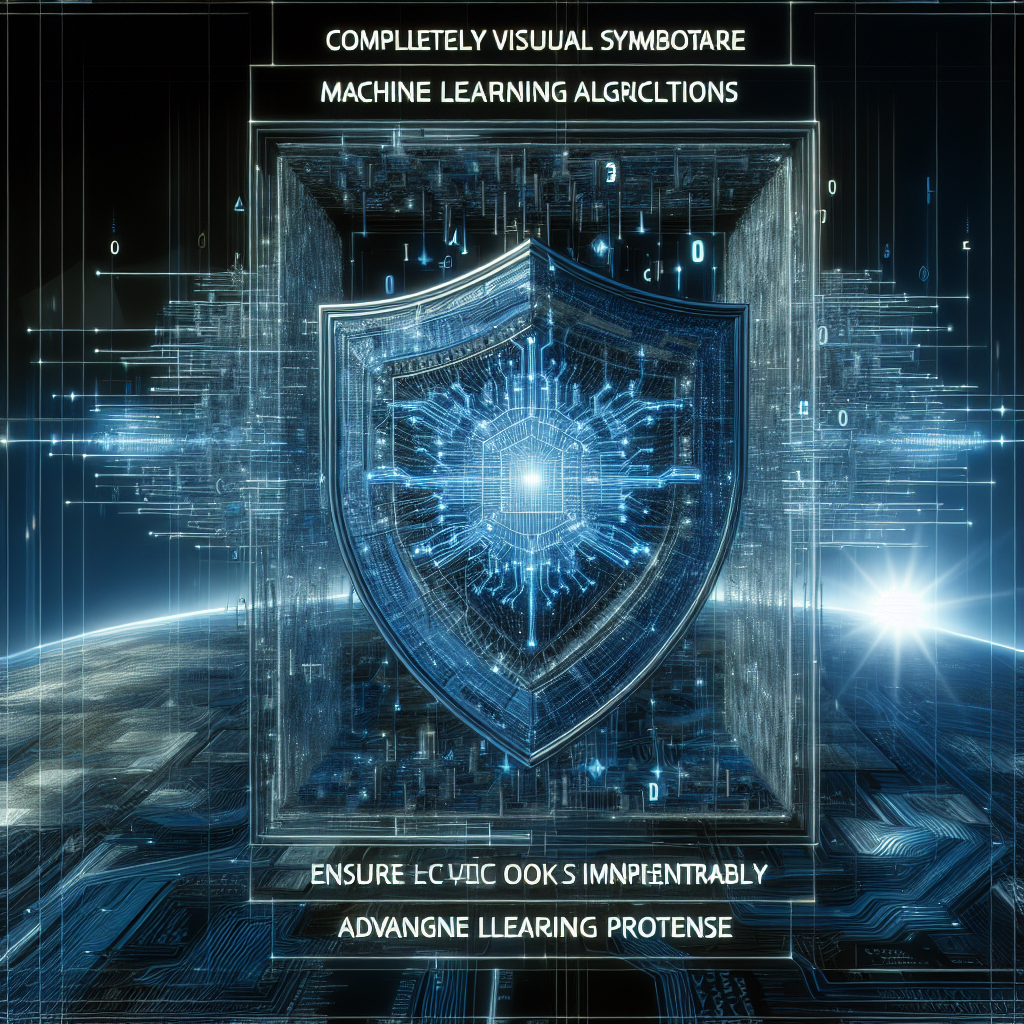In today’s rapidly evolving digital landscape, cybersecurity has become a top priority for businesses of all sizes. With the increasing frequency and sophistication of cyber attacks, organizations are constantly looking for new and innovative ways to protect their sensitive data and infrastructure. One of the most promising technologies in this field is machine learning, which can help organizations detect and respond to cyber threats in real-time.
Machine learning is a subset of artificial intelligence that enables computers to learn from data and make intelligent decisions without being explicitly programmed. In the context of cybersecurity, machine learning algorithms can analyze vast amounts of data to identify patterns and anomalies that may indicate a potential security threat. By continuously learning from new data, these algorithms can adapt and improve their ability to detect and mitigate cyber attacks.
There are several ways in which organizations can leverage machine learning for advanced cybersecurity defense:
1. Threat Detection and Prevention: Machine learning algorithms can analyze network traffic, user behavior, and system logs to detect unusual patterns that may indicate a security threat. By continuously monitoring these data sources, organizations can identify and respond to potential attacks before they cause any damage.
2. Anomaly Detection: Machine learning can be used to detect anomalies in network traffic, such as unusual spikes in data volume or unauthorized access attempts. By flagging these anomalies in real-time, organizations can quickly investigate and respond to potential security breaches.
3. Malware Detection: Machine learning algorithms can be trained to recognize patterns in malware code and behavior, enabling organizations to detect and block malicious software before it can infiltrate their systems.
4. Phishing Detection: Machine learning can help organizations identify and block phishing emails by analyzing the content, sender, and behavior of incoming messages. By automatically flagging suspicious emails, organizations can reduce the risk of employees falling victim to phishing attacks.
5. User Behavior Analysis: Machine learning algorithms can analyze user behavior patterns to identify potential insider threats or compromised accounts. By monitoring user activity and flagging unusual behavior, organizations can proactively address security risks within their own ranks.
6. Predictive Maintenance: Machine learning can also be used for predictive maintenance of cybersecurity systems, helping organizations identify and address vulnerabilities before they can be exploited by attackers.
While machine learning offers significant benefits for cybersecurity defense, it is important to note that it is not a silver bullet solution. Organizations must still implement robust security measures, such as encryption, access controls, and regular security audits, to complement their machine learning-based defenses.
Frequently Asked Questions (FAQs):
Q: How does machine learning differ from traditional cybersecurity approaches?
A: Traditional cybersecurity approaches rely on predefined rules and signatures to detect and block threats, while machine learning algorithms can adapt and learn from new data to identify emerging threats that may not be covered by traditional methods.
Q: What are the challenges of implementing machine learning for cybersecurity defense?
A: One of the main challenges of implementing machine learning for cybersecurity defense is the need for large and high-quality datasets to train the algorithms effectively. Additionally, organizations must ensure that their machine learning models are regularly updated and tuned to perform effectively in detecting new and evolving threats.
Q: Can machine learning algorithms replace human cybersecurity professionals?
A: While machine learning can automate certain aspects of cybersecurity defense, human cybersecurity professionals are still essential for interpreting the results of machine learning algorithms, investigating security incidents, and making strategic decisions to protect an organization’s assets.
Q: How can organizations ensure the security and privacy of their data when using machine learning for cybersecurity defense?
A: Organizations must implement robust data security measures, such as encryption, access controls, and data anonymization, to protect the sensitive data used to train machine learning algorithms. Additionally, organizations should regularly audit and monitor their machine learning systems to ensure that they are compliant with data privacy regulations.
Q: What are some best practices for organizations looking to leverage machine learning for advanced cybersecurity defense?
A: Some best practices for organizations looking to leverage machine learning for advanced cybersecurity defense include:
– Ensuring that they have access to high-quality and diverse datasets to train their machine learning algorithms effectively.
– Regularly updating and tuning their machine learning models to adapt to new and evolving threats.
– Integrating machine learning-based cybersecurity defenses with existing security measures to provide comprehensive protection.
– Collaborating with cybersecurity experts and data scientists to implement and manage machine learning-based defenses effectively.
In conclusion, machine learning offers significant potential for organizations looking to enhance their cybersecurity defenses and protect their sensitive data and infrastructure from cyber threats. By leveraging machine learning algorithms for threat detection, anomaly detection, malware detection, and user behavior analysis, organizations can proactively identify and respond to security threats in real-time. However, it is essential for organizations to implement robust security measures and best practices to complement their machine learning-based defenses and ensure the effectiveness and reliability of their cybersecurity efforts.

